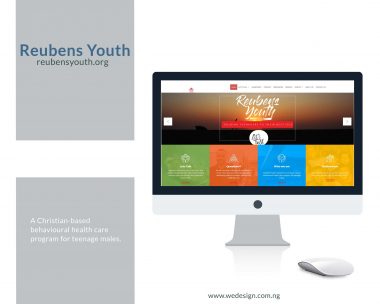Online marketing, SEO Optimization The Benefits of Integrating Brand Strategy & Web Design

When the client/design firm partnership creates a direct connection between strategic thinking about brand and online execution, we are more effective in uncovering insights, developing strategies; then bringing them to life.
I recently completed brand strategy for The Pratt Center for Community Development, helping them articulate their mission, values, theory of change, differentiators; and finding ways to communicate their work and impact. A website redesign was a core part of the engagement, and once brand strategy was complete, it was time to translate it into a user experience.
When the client/design firm partnership creates a direct connection between strategic thinking about brand and online execution, we are more effective in uncovering insights, developing strategies; then bringing them to life.
I recently completed brand strategy for The Pratt Center for Community Development, helping them articulate their mission, values, theory of change, differentiators; and finding ways to communicate their work and impact. A website redesign was a core part of the engagement, and once brand strategy was complete, it was time to translate it into a user experience.
Very often, at this point, our Design Director takes the lead and I’ll support him, a UX Designer, and a visual designer (these two may be the same person). But this time, our UX designers were pretty busy, and I had just spent over a month getting to know The Pratt Center. To keep things moving, it just made a lot more sense for me to see the project through to UX and design.
I hadn’t gotten my hands dirty creating wireframes in a while, and it’s not like I need an excuse to design, so over the next few months, I worked with Pratt Center’s team to plan and design their website so our developers could then build it. The process reinforced everything I believe about why integrating brand strategy into the design process leads to a better client experience — and better results.
Looks Great, Falls on the Road
A common complaint you hear about rebranding is that it’s filled with lots of feel-good moments and insights, but that those can be fleeting. Clients are left with a lot of ideas, energy, and raw material — but unless their partner works in interactive, can have a hard time translating it into well-designed user experiences. But when it comes to creating valuable brand experiences, this translation from strategy to execution is where the rubber meets the road.
Many branding firms typically develop brand strategy and messaging, logo and identity design, and brand guidelines that clients can then use to extend their visual branding. This work might include blowing out high-level concepts that demonstrate what your a new home page might look like, but the heavy lifting of content strategy, technical strategy and user experience design are completely removed from the picture. As a result, clients working with branding firms can be left with far more questions than answers when it comes to figuring out how to design a cohesive, consistent brand experience across all of its communications.
Online Loser Experience
For years, as the interactive medium took off, lots of traditional branding agencies remained focused on their core areas of expertise. Some branding firms do have experience with the design part of interactive, maybe even UX design. But get into things like developing content strategy, taxonomies, content types, databases, mobile, and CMS architecture — everything going on under the hood to deliver online brand experiences — and it’s an entirely different ballgame.
[distance1]
So if you’re a nonprofit or academic institution that needs to strengthen your brand and extend this work through to web design, where does this leave you?
Most likely, you’re going to have to engage another firm to execute your brand strategy online. Your branding partner may recommend one, which definitely helps, but also seriously limits your choices. Or, you could send out another RFP and go though the process of becoming comfortable with a new partner. Either way (but particularly in the latter scenario), all the strategies, ideas, and nuances you’ve spent weeks or months uncovering — the things that make up the core of your brand — are at risk of being lost in translation. You could retain your branding firm to help quarterback the project, but this will mostly bloat your cost basis (and possibly frustrate your interactive partner).
Integrated Brand Strategy & Design
Thinking strategically about your brand, and being rigorous and focused in communicating it is critical to creating effective brand experiences for audiences. But ultimately, brands need more than strategy, messaging, and a logo to operate in the real world. They need well thought-out design systems that can be executed with consistency across an entire organization — particularly online. Because more audiences will likely experience your brand online than anywhere else, which makes an organization’s website the most strategic communications asset they own. And this means translating strategic thinking about brands into equally strategic user experiences online.
So why on earth would anyone develop brand strategy separate from the design execution that brings it to life if they didn’t have to?
More efficient, more effective, and a better client experience? If you ask me, it doesn’t make sense to do it any other way.
This brings me back to my recent experience with The Pratt Center. After many years of building out small, agile, creative teams at MSDS that work together across these areas, it was refreshing — and reaffirming — to work directly across the bulk of a comprehensive branding and interactive engagement. It shined a spotlight on the benefits of a partnership and process that integrates brand strategy and design thinking — and the tremendous benefits they have for clients, particularly online.
I think our client summed it up best when she said this about the project:
“Working with MSDS was a bit like suddenly having our own in-house branding team. They took the time to get to know us, and acted creative experts and brand advocates. MSDS pushed us to verbalize the strategy and theory behind our work, to talk about our projects and research; then developed messaging and a website that reflect it all. It’s been a challenging, yet immensely rewarding experience.”
When branding and design firms collaborate with clients to develop ideas and strategies that help provide insight and focus; then stay with them for the long haul to help them bring it to life with a systems-based design that creates consistency online and off, the result is a far more meaningful, far more effective brand experience for audiences.
See more here.



